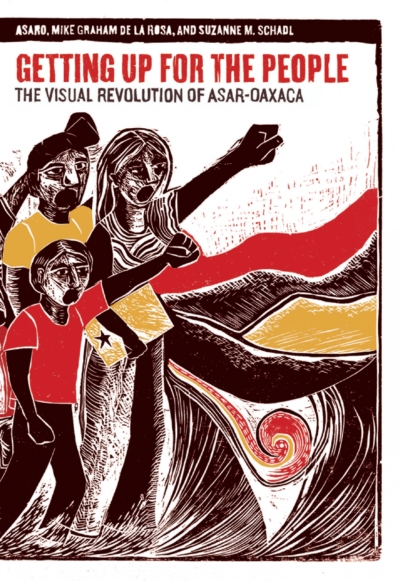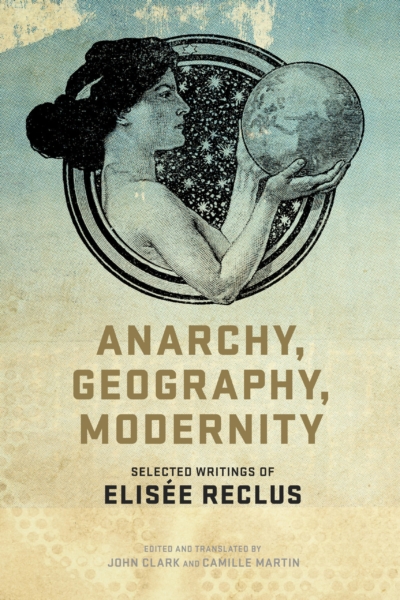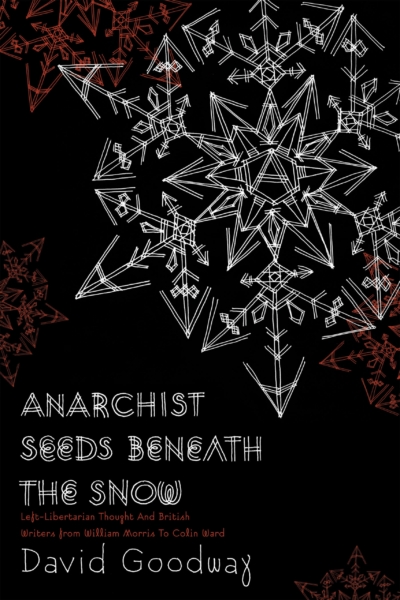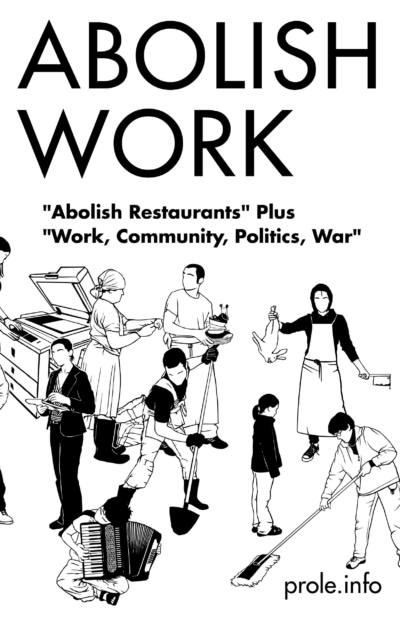Getting Up for the People tells the story of the Assembly of Revolutionary Artists of Oaxaca (ASARO) by remixing their own images and words with curatorial descriptions. Part of a long tradition of socially conscious Mexican art, ASARO gives respect to Mexican national icons; but their themes are also global, entering contemporary debates on issues of corporate greed, genetically modified organisms, violence against women, and abuses of natural resources.
In 2006 ASARO formed as part of a broader social movement, part of which advocated for higher teachers’ salaries and access to school supplies. They exercised extralegal means to “get up,“ displaying their artwork in public spaces. ASARO stands out for their revitalizing remix of collective social action with modern conventions in graffiti, traditional processes in Mexican printmaking, and contemporary communication through social networking.
Now they enjoy international recognition as well as state-sanctioned support for their artists’ workshops. They use their notoriety to teach Oaxacan youth the importance of publicly expressing and exhibiting their perspectives on the visual landscape.
Praise:
- “The Assembly of Revolutionary Artists of Oaxaca (ASARO) protest and rebel through their art, which follows a tradition established by important Mexican artists of the past including the Mexican Muralists and the Taller de Gráfica Popular. ASARO connects with their artistic and cultural history through a familiar and provocative manner that results in a visual language that is distinctly their own. Getting Up for the People is a significant contribution to the field of graphic arts history, but more than that, it gives light to the vital work of this important artist collective.” —Theresa Avila, PhD, author of “Laborious Arts: El Taller de Gráfica Popular & the Meaning of Labor in Las Estampas de la Revolución Mexicana“
- “This in-depth study of ASARO is timely and necessary for connecting the continuity of traditions embedded in Mexican art, and also for making visual art accessible to everyone.“ —Tey Marianna Nunn, PhD, director and chief curator, Art Museum at the National Hispanic Cultural Center
- “In Mexico and other colonized places, it’s not just about getting up; it’s about getting people to tune in and think.“ —Cozca-13, street artist
About the Contributors:
The Asamblea de Artistas Revolucionarios de Oaxaca (ASARO) is a contemporary Mexican artists’ collective comprised of young art students and street artists. They employ multiple mediums including wood and linoleum block prints, large-scale graffiti murals, interventionist stencils, and wheat pastes. Public and academic interest in their work (as evidenced in exhibits and recent publications) is proof of their success in “getting up.“
Mike Graham de La Rosa is a Mexican American street artist/activist, Spanish teacher, and curatorial intern working toward his master’s degree in Latin American studies. He is the recipient of a New Mexico Higher Education Department scholarship and a Tinker Foundation award for his work on ASARO.
Suzanne M. Schadl is curator of Latin American collections at the University of New Mexico, where she teaches Latin American Studies. As the LaEnergaia collections manager for a Technological Innovation and Cooperation for Foreign Information Access (TICFIA) grant, she also explores digitally born archiving. She currently is the Rapporteur General in the Seminar on the Acquisition of Latin American Library Materials (SALALM) and editor of the Resources for College Libraries’ Spanish and Portuguese Literatures list.
Product Details:
Contributors: ASARO • Mike Graham de La Rosa • Suzanne M. Schadl
Publisher: PM Press
ISBN: 978-1-60486-960-6
Published: 04/14
Format: Full Color Paperback
Size: 9 x 6
Page Count: 128
Subjects: Art-Street Art/History-Oaxaca/ Politics-Activism
See and hear author interviews, book reviews, and other news on the Contributors’ Pages coming soon.






